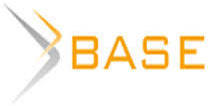Writing in the era of large language models: a bibliometric analysis of research field
The widespread adoption of large language models (LLMs) and chatbots over the past two years has significantly altered writing practices.This editorial paper aims to conduct a bibliometric analysis of the interdisciplinary research field concerning various aspects of writing in the context of LLMs. A search was conducted in the bibliographic database Scopus in December 2024 using the following query: (“large language model*” OR “LLM” OR “*GPT”) AND “writing”. We included studies published since 2020 and limited our search to articles, conference proceedings, books and book chapters. The search yielded a total of 1,629 documents. The retrieved records were analyzed using the R package bibliometrix and VOSviewer software. By employing these tools in combination, we identified the most relevant sources, leading countries and institutions, analyzed the most cited publications of the collection and constructed topical clusters. Our findings indicate that the most prominent research topics include the authorship and plagiarism in academic writing, challenges in second language education, automated writing evaluation, and issues related to creative writing in the context of LLMs.
Figures









Litvinova, T. A., Mikros, G. K., Dekhnich, O. V. Writing in the Era of Large Language Models: A Bibliometric Analysis of Research Field, Research Result. Theoretical and Applied Linguistics, 10 (4), 5–16.


















While nobody left any comments to this publication.
You can be first.
Aria, M. and Cuccurullo, C. (2017). bibliometrix: An R-tool for comprehensive science mapping analysis, Journal of Informetrics, 11 (4), 959–975. https://doi.org/10.1016/j.joi.2017.08.007 (In English)
Barrot, J. S. (2023). Using ChatGPT for second language writing: Pitfalls and potentials, Assessing Writing, 57, 100745. https://doi.org/10.1016/j.asw.2023.100745(In English)
Braun, V. and Clarke, V. (2006). Using thematic analysis in psychology, Qualitative Research in Psychology, 3 (2), 77–101. https://doi.org/10.1191/1478088706qp063oa (In English)
Cascella, M., Montomoli, J., Bellini, V. and Bignami, E. (2023). Evaluating the Feasibility of ChatGPT in Healthcare: An Analysis of Multiple Clinical and Research Scenarios, Journal of Medical Systems, 47, 33. https://doi.org/10.1007/s10916-023-01925-4(In English)
Chan, C. K. Y. and Hu, W. (2023). Students’ voices on generative AI: perceptions, benefits, and challenges in higher education, International Journal of Education Technology in Higher Education, 20, 43. https://doi.org/10.1186/s41239-023-00411-8 (In English)
Cotton, D. R. E., Cotton, P. A. and Shipway, J. R. (2023). Chatting and cheating: Ensuring academic integrity in the era of ChatGPT, Innovations in Education and Teaching International, 61 (2), 228–239. https://doi.org/10.1080/14703297.2023.2190148(In English)
Crompton, H. and Burke, D. (2023). Artificial intelligence in higher education: the state of the field, International Journal of Education Technology in Higher Education, 20, 22. https://doi.org/10.1186/s41239-023-00392-8(In English)
Dehouche, N. (2021). Plagiarism in the age of massive Generative Pre-trained Transformers (GPT-3), Ethics in Science and Environmental Politics, 21, 17–23. https://doi.org/10.3354/esep00195 (In English)
Dergaa, I., Chamari, K., Zmijewski, P. and Ben Saad, H. (2023). From human writing to artificial intelligence generated text: examining the prospects and potential threats of ChatGPT in academic writing, Biology of sport, 40 (2), 615–622. https://doi.org/10.5114/biolsport.2023.125623 (In English)
Else, H. (2023). Abstracts written by ChatGPT fool scientists, Nature, 613 (7944), 423. https://doi.org/10.1038/d41586-023-00056-7 (In English)
Finnie-Ansley, J., Denny, P., Becker, B. A., Luxton-Reilly, A. and Prather, J. (2022). The Robots Are Coming: Exploring the Implications of OpenAI Codex on Introductory Programming, in Proceedings of the 24th Australasian Computing Education Conference (ACE’22), Association for Computing Machinery, New York, NY, USA, 10–19. https://doi.org/10.1145/3511861.3511863 (In English)
Gao, C. A., Howard, F. M., Markov, N. S., Dyer, E. C., Ramesh, S., Luo, Y. and Pearson, A. T. (2023). Comparing scientific abstracts generated by ChatGPT to real abstracts with detectors and blinded human reviewers, npj Digital Medicine, 6, 75 https://doi.org/10.1038/s41746-023-00819-6 (In English)
Haleem, A., Javaid, M. and Singh, R.P. (2022). An era of ChatGPT as a significant futuristic support tool: A study on features, abilities, and challenges, BenchCouncil Transactions on Benchmarks, Standards and Evaluations, 2 (4). https://doi.org/10.1016/j.tbench.2023.100089(In English)
Perkins, M. (2023). Academic integrity considerations of AI Large Language Models in the post-pandemic era: ChatGPT and beyond, Journal of University Teaching and Learning Practice, 20 (2). https://doi.org/10.53761/1.20.02.07(In English)
Salvagno, M., Taccone, F. S. and Gerli, A. G. (2023). Can artificial intelligence help for scientific writing?, Critical Care, 27, 75. https://doi.org/10.1186/s13054-023-04380-2 (In English)
Su, Y., Lin, Y. and Lai, C. (2023). Collaborating with ChatGPT in argumentative writing classrooms, Assessing Writing, 57. https://doi.org/10.1016/j.asw.2023.100752(In English)
Taecharungroj, V. (2023). What Can ChatGPT Do? Analyzing Early Reactions to the Innovative AI Chatbot on Twitter, Big Data and Cognitive Computing, 7 (1), 35. https://doi.org/10.3390/bdcc7010035 (In English)
Van Eck, N. J. and Waltman, L. (2014). Visualizing bibliometric networks, in Ding, Y., Rousseau, R. and Wolfram, D. (eds.) Measuring scholarly impact: Methods and practice, Springer, 285–320. http://dx.doi.org/10.1007/978-3-319-10377-8_13 (In English)
Yan, D. (2023). Impact of ChatGPT on learners in a L2 writing practicum: An exploratory investigation, Education and Information Technologies, 28, 13943–13967. https://doi.org/10.1007/s10639-023-11742-4 (In English)
Yuan, A., Coenen, A., Reif, E., and Ippolito D. (2022). Wordcraft: Story Writing With Large Language Models, Proceedings of the 27th International Conference on Intelligent User Interfaces (IUI’22), Association for Computing Machinery, New York, NY, USA, 841–852. https://doi.org/10.1145/3490099.3511105 (In English)
Tatiana A. Litvinova acknowledges the support of the Ministry of Education of the Russian Federation (the research was supported by the Ministry of Education of the Russian Federation within the framework of the state task in the field of science, topic number QRPK-2024-0011). Olga V. Dekhnich and G. Mikros received no financial support for the research, authorship, and publication of this article.